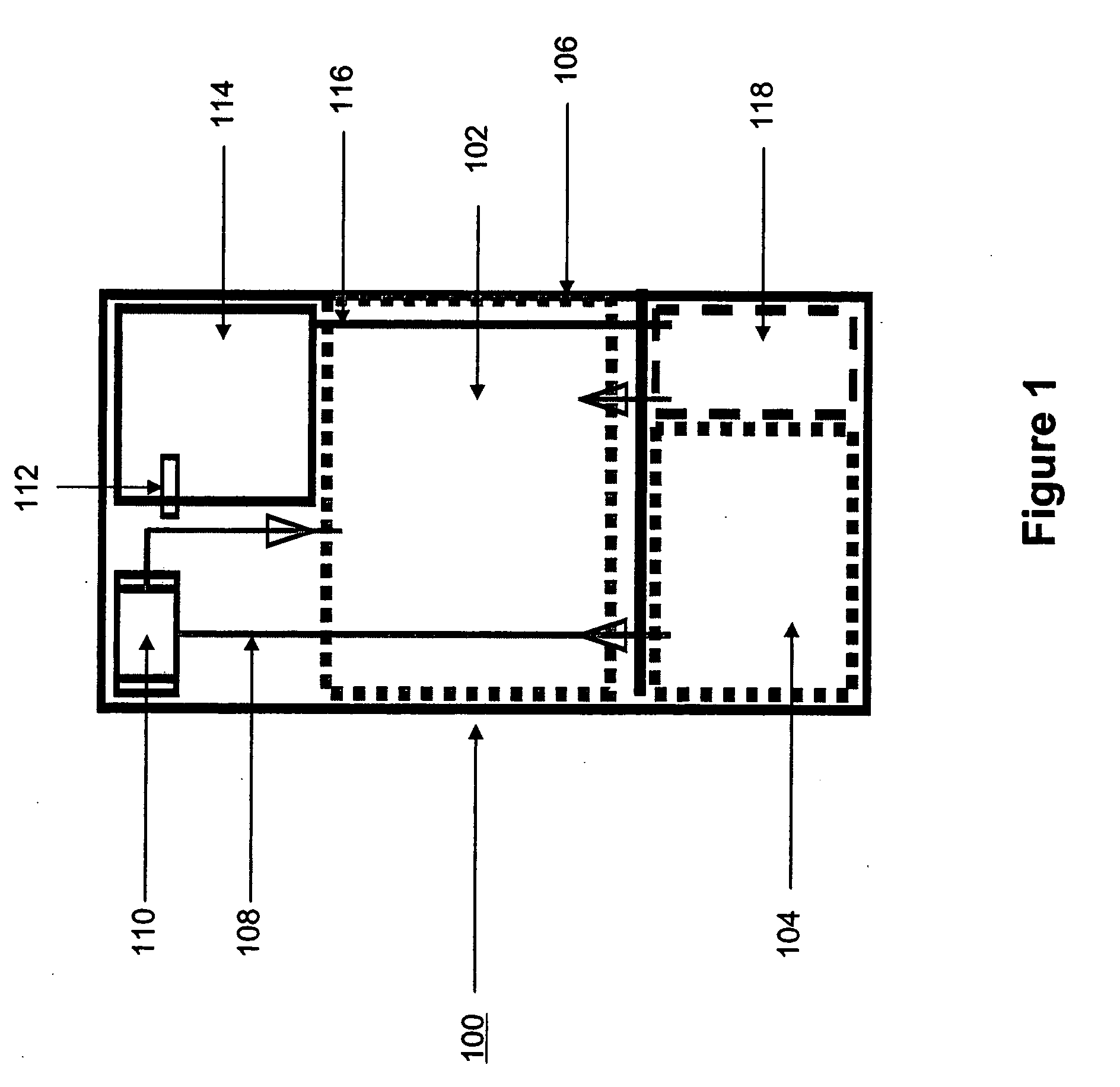Systems and methods for hydrogen generation from solid hydrides
a solid hydride and hydrogen technology, applied in the direction of electrochemical generators, chemical/physical/physical-chemical processes, chemical apparatus and processes, etc., can solve the problems of complex plant associated balance, inability to meet the needs of micro fuel cell applications, and the shelf life of liquid fuel use aqueous fuel solutions, etc., to achieve the effect of regulating the hydrogen production ra
- Summary
- Abstract
- Description
- Claims
- Application Information
AI Technical Summary
Benefits of technology
Problems solved by technology
Method used
Image
Examples
example 1
[0048] System dynamics and H2 flowrates were measured in a semi-batch reactor system with solid granular sodium borohydride loaded in a 250 mL Pyrex reactor. Hydrochloric acid (HCl) was fed by a syringe pump at the specified flow rates and duration (Table 1). Reaction temperature was monitored with an internal thermal couple. Hydrogen was cooled to room temperature through a water / ice bath and passed through a bed of silica gel to remove any moisture in the gas stream. The dried H2 flow rate was measured with an on-line mass flow meter. Sodium borohydride conversion was analyzed using NMR of the post-reaction mixture after each run was completed.
[0049] Reaction for hydrogen generation can be stopped at various conversion levels by stopping the acid solution feed. This provides an effective mechanism for controlling hydrogen generation. The flow rate of the acid can be used to regulate the maximum temperature of the system and the maximum hydrogen flow rate, as shown in FIGS. 3A, 3B...
example 2
[0051] Using the procedures described in Example 1, dynamic hydrogen generation rates were measured after periodic start-stop cycles with an acid solution feeding rate of 10 mL / h of 10 wt-% HCl. The acid flow was started and stopped repeatedly, and the reactor cooled to ambient temperature between stop / start cycles, to measure hydrogen generation rate as shown in FIG. 6. As the reaction proceeds, the solid sodium borohydride is converted to a mixture of borate compounds. The droplet of acid solution diffuses through these products to reach unreacted sodium borohydride, resulting in somewhat decreased reaction rates for the 3rd cycle, though startup and stop dynamics remained fast.
example 3
[0052] According to one experiment, a 1 wt % aqueous hydrochloric acid solution was added drop-wise to 5 g of solid NaBH4 in a sealed container. The hydrogen evolved from this reaction was monitored with a mass flow meter. FIG. 7 depicts the hydrogen flow rate upon addition of acidified water. Under the conditions of the experiment, the amount of hydrogen evolved is directly proportional to the amount of acid added, and the integrated yield of hydrogen corresponds to about 100% conversion of borohydride to hydrogen. The system response after hydrogen addition was also rapid, of less than about 5 s. The amount of water added to NaBH4 was about 5 times the molar amount of NaBH4.
PUM
 Login to View More
Login to View More Abstract
Description
Claims
Application Information
 Login to View More
Login to View More - R&D
- Intellectual Property
- Life Sciences
- Materials
- Tech Scout
- Unparalleled Data Quality
- Higher Quality Content
- 60% Fewer Hallucinations
Browse by: Latest US Patents, China's latest patents, Technical Efficacy Thesaurus, Application Domain, Technology Topic, Popular Technical Reports.
© 2025 PatSnap. All rights reserved.Legal|Privacy policy|Modern Slavery Act Transparency Statement|Sitemap|About US| Contact US: help@patsnap.com



